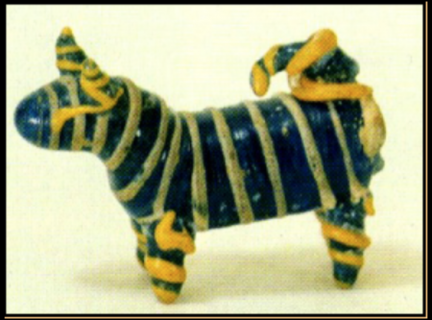
There are over 50 types of Spitzes recognized in the world, and the various breeds belonging to this grouping of dogs are herders, haulers, guards, companions and/or hunters. The smallest spitz is the Pomeranian (and possibly the oldest breed from Central Europe), while among the largest are the Akita, Alaskan Malamute and Greenland Dog. In between are a large number of breeds, a few of which are the American Eskimo Dog, Alaskan Klee Kai, German Spitz, Volpino Italiano and Japanese Spitz.
Furthermore, some cynologists subdivide the spitzes into sub-types, depending on their ancestry. There’s the German spitz sub-group, while the Asian spitz sub-group includes dogs of Asian origin, such as the Chow Chow and the Akita. The AKC-recognized Spitz breeds by category are: Arctic, European, Oriental, Scandinavian and “other.” The FCI, meanwhile, categorizes these breeds into the Spitz and Primitive Types Group made up of eight different sections:
- Section 1 : Nordic Sledge Dogs
- Section 2 : Nordic Hunting Dogs
- Section 3 : Nordic Watchdogs and Herding Dogs
- Section 4 : European Spitz
- Section 5 : Asian Spitz and Related Breeds
- Section 6 : Primitive Types
- Section 7 : Primitive Types – Hunting Dogs
Precise origins of the spitz type aren’t known, but a significant number of dogs classed as such originated from East Asia and the Arctic regions; while the word ‘spitz’ is Germanic, spitz typing isn’t thought to be indigenously Germanic. That said, spitz breeds do share some common characteristics: They are well suited to living in tough northern climates and often have an insulating, waterproof double coat; they have small ears that reduce the risk of frostbite, and almond shaped eyes that are set obliquely. Most have a wedge shaped head with a definite stop over the nasal sinus that in cold climates, allows space for air to warm as the dog breathes. Often, they have a tail that curls over the dog’s back, and thick fur on their paws protect them from sharp ice. They tend to be loyal, good natured and inquisitive, but they might also be prone to a touch of stubbornness, usually because they’re so intelligent.
Johann Friedrich Gmelin first described this dog type as Canis pomeranus in his revision of Systema naturae in 1788. Do you have a Canis pomeranus living at home? Show us your pictures!
Image: Glass spitz dog from Wuerttemberg area of Germany thought to be from 200 BC. The figure comes from Grave 31 of the ice-grave burial ground at the western edge of the Wallertheim brick pit characterized by single graves, or smaller grave groups of square ditch systems, a phenomenon also found in other areas of the Celtic region of the Middle- and late Latène, such as from France.

Teri-Anne the Siberian Husky
Amy, she’s lovely!!! Thank you for sharing her with us!
Icelandic Sheepdogs Rif (my own smooth) and Viggo (my friend’s long-hair)
What a great picture in coat contrasts, Nancy! Thank you for sharing this here. We know a lot of folks who aren’t on Facebook and feel like they’re missing good pictures. Yours helps rectify this!
Birta, Icelandic Sheepdog
Oops, wrong file. Thats Kaeti 🙂
Brita is lovely, Karen! Such a great breed.
Lilac, 12 year old female Samoyed